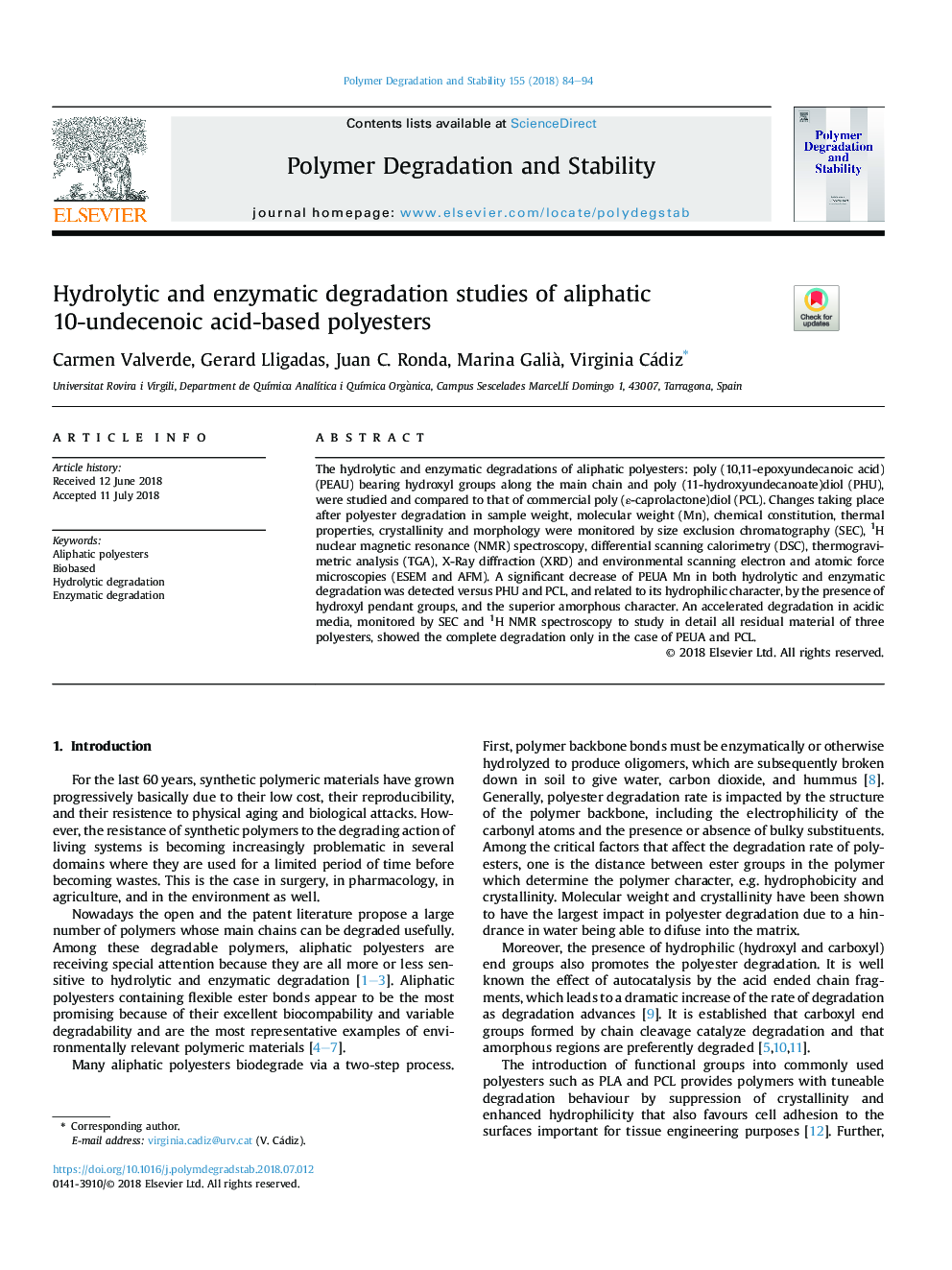| Article ID | Journal | Published Year | Pages | File Type |
|---|---|---|---|---|
| 7823902 | Polymer Degradation and Stability | 2018 | 11 Pages |
Abstract
The hydrolytic and enzymatic degradations of aliphatic polyesters: poly (10,11-epoxyundecanoic acid) (PEAU) bearing hydroxyl groups along the main chain and poly (11-hydroxyundecanoate)diol (PHU), were studied and compared to that of commercial poly (ε-caprolactone)diol (PCL). Changes taking place after polyester degradation in sample weight, molecular weight (Mn), chemical constitution, thermal properties, crystallinity and morphology were monitored by size exclusion chromatography (SEC), 1H nuclear magnetic resonance (NMR) spectroscopy, differential scanning calorimetry (DSC), thermogravimetric analysis (TGA), X-Ray diffraction (XRD) and environmental scanning electron and atomic force microscopies (ESEM and AFM). A significant decrease of PEUA Mn in both hydrolytic and enzymatic degradation was detected versus PHU and PCL, and related to its hydrophilic character, by the presence of hydroxyl pendant groups, and the superior amorphous character. An accelerated degradation in acidic media, monitored by SEC and 1H NMR spectroscopy to study in detail all residual material of three polyesters, showed the complete degradation only in the case of PEUA and PCL.
Related Topics
Physical Sciences and Engineering
Chemistry
Organic Chemistry
Authors
Carmen Valverde, Gerard Lligadas, Juan C. Ronda, Marina Galià , Virginia Cádiz,
